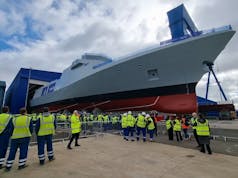NATO is set to enhance its Intelligence, Surveillance, and Reconnaissance Force (NISRF) with additional capabilities following decisions made at the recent Washington Summit, the alliance announced.
On 9 July 2024, national armaments directors reached an agreement to strengthen the NISRF, which plays a vital role in supporting NATO missions and operations.
The NISRF, say the Alliance, enables NATO Allies to closely collaborate in collecting, analysing, and sharing intelligence data across all domains, including space. This cooperation is crucial for enhancing reporting and supporting NATO’s various missions.
The NISRF is an integral part of NATO’s broader intelligence network, connecting NATO Headquarters, the NATO Command Structure, the NATO Force Structure, as well as multinational and national networks.
The planned enhancements to the NISRF include bolstering NATO’s overall ISR capabilities and improving early warning and control systems.
Key efforts in this regard involve the Alliance Future Surveillance and Control (AFSC) programme, the Digital Ocean initiative, multinational initiatives for Remotely Piloted Aircraft Systems (RPAS), and Alliance Persistent Surveillance from Space (APSS).
What is NISRF?
The NISRF provides commanders with a comprehensive picture of the situation on the ground, enabling them to make informed decisions.
- The NISRF consists of air, ground and support segments, performing rapid all-weather, persistent wide-area terrestrial and maritime surveillance.
- NISRF provides in-theatre situational awareness to commanders of deployed forces.
- It also contributes to a range of missions such as the protection of ground troops and civilian populations, border control and maritime safety, the fight against terrorism, crisis management and humanitarian assistance in natural disasters.
- All five NATO RQ-4D ”Phoenix” remotely piloted aircraft are located at the NISRF Main Operating Base in Sigonella, Italy.
According to the Alliance on their website:
“The NATO owned and operated NISRF core system enables the Alliance to perform persistent surveillance over wide areas from the high-altitude, long-endurance (HALE) aircraft, operating at considerable stand-off distances and in any weather or light conditions. Using advanced radar sensors, these systems continuously detect and track moving objects throughout observed areas and provide radar imagery of areas of interest and stationary objects.
The Force is located at the NISRF Main Operating Base in Sigonella, Italy. The base currently hosts around 450 NISRF personnel, in addition to a small number of NISRF staff elements based at Allied Command Operations in Mons, Belgium and at Allied Air Command in Ramstein, Germany. The NISRF Main Operating Base serves as a NATO Joint Intelligence, Surveillance and Reconnaissance (JISR) deployment base and as a data exploitation and training centre.”













Sorry to be that person guys but…. you might want to edit the heading !!!!! 😁….. please don’t ban me !
😂